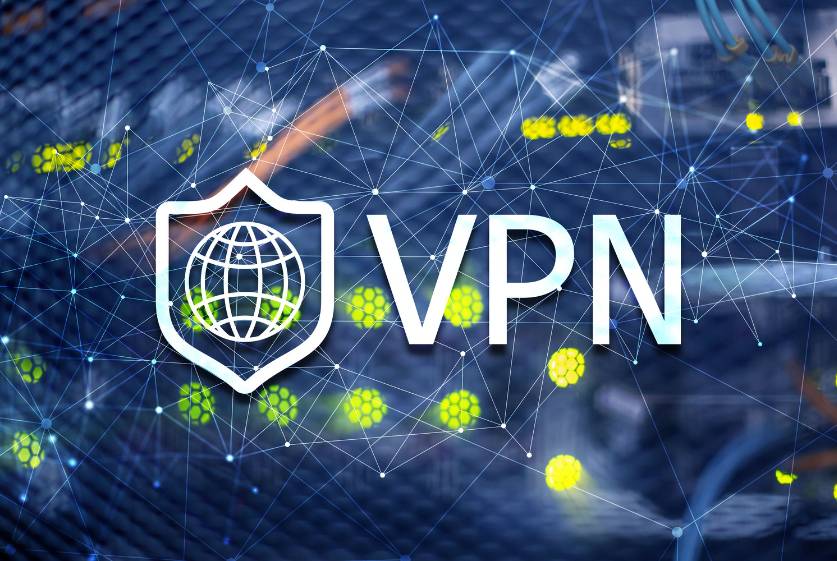Table of Contents
What is Overlay Network And Its Definition
What is Overlay Network An overlay network refers to a virtual network that is built on top of an existing physical network. The overlay network has its nodes and connections between nodes, which operate at an abstraction layer above the underlying physical network.
Data packets sent between nodes may traverse multiple physical links transparently.
In simpler terms, an overlay network is a virtual network built on top of another network. The overlay network leverages the existing physical connections but appears to the user as a separate, dedicated network.
How Overlay Networks Work
Overlay networks utilize the existing infrastructure of an underlying network but implement specialized functionality by adding an abstract layer on top. Here’s an overview of how overlay network technology works:
Nodes
In an overlay network, some devices connected to the underlying physical network assume specialized roles as overlay nodes. These nodes adhere to customized communication protocols for the overlay network. That allows overlay nodes to provide services and perform functions not offered on the underlying network alone.

Connections
The overlay network has virtual connections between nodes that traverse paths across the underlying infrastructure. Overlay nodes have additional software enabling enhanced communication between themselves according to the overlay network protocol.
Routing/Forwarding
Overlay networks feature customized virtual routing and forwarding rules and algorithms between nodes. This overlay routing directs traffic according to the specific needs and policies of the virtual network for optimal performance. Routing decisions may be based on various metrics depending on the overlay network’s role.
Types of Overlay Networks
Some of the most common networking technologies that employ overlay network architectures include:
Peer-to-Peer (P2P) Networks
P2P networks like BitTorrent allow direct connections between users to distribute and share data via specialized protocols. This forms a decentralized overlay network where participants route traffic and exchange files without centralized servers.

Virtual Private Networks (VPNs)
VPNs construct private overlay networks on public infrastructure to provide secure remote connections for organizations and individuals. Encryption protects sensitive data as VPN traffic tunnels through the public internet.
Content Delivery Networks (CDNs)
CDNs consist of geographically distributed servers that cache copies of content to optimize delivery. The global server network forms an overlay that intelligently routes user requests based on proximity and availability.
Benefits of Overlay Networks
Here are some of the main benefits overlay networks can provide:
- Flexibility – Overlays can customize routing, implement specialized protocols, and define policies adapted to the virtual network’s specific needs.
- Security – Overlay networks often utilize encryption and access control features not inherently available on the underlying infrastructure.
- Efficiency – Overlay optimization technologies can support improved latency, bandwidth utilization, redundancy, and overall performance.
- Scalability – With appropriate protocols, overlay networks can add and remove nodes easily without affecting the physical network. This supports on-demand growth and vast scales.
- Reliability – Mesh architectures, redundant links, and self-healing mechanisms bolster resilience and uptime.
Challenges with Overlay Networks
Some potential challenges with overlay networking approaches include:
- Complexity – Significant complexity involved in overlay software, network virtualization, and cross-layer interactions.
- Overhead – Performance overhead stemming from extra abstraction layers, tunneling, encapsulation, and advanced functionality.
- Topology Dependence – Overlays rely on the underlying network’s performance, reliability, and topology – issues can propagate upwards.
- Management Difficulties – More complicated network architecture makes management, orchestration, monitoring, and troubleshooting harder.
- Legal Ambiguity – Uncertainty regarding regulations and liability given multiple stakeholders owning different layers.
What is a P2P Overlay Networks
A peer-to-peer (P2P) network is a distributed network architecture comprised of participant nodes that both utilize and provide resources. Peers can directly exchange information, storage, bandwidth, and various services bypassing the need for central servers.
Popular P2P Networks
Some well-known examples of peer-to-peer overlay networks include:
- Bit Torrent – Massively popular P2P file distribution protocol enabling decentralized sharing of large files and datasets.
- Gnutella – One of the early decentralized P2P network architectures still active today. Utilizes distributed hash tables for indexing.
- Freenet – An anonymous P2P platform focused on censorship resistance, freedom of speech online, and privacy protections.
Structure of P2P Overlay Networks
P2P overlays exhibit various structural designs with different centralization schemes:

Centralized
A centralized server facilitates node discovery and manages connections. Easy to implement but presents a single point of failure.
Decentralized
Nodes connect randomly in a mesh topology. Fully distributed but node discovery is challenging.
Hybrid
Leverages super nodes that manage routing tables and relay traffic. Balances distributed resilience with efficiency.
Pros and Cons of P2P Overlay Networks
Benefits of P2P overlay networks include:
- Distributed operation without central servers
- Support large scales with node autonomy
- Achieve high redundancy and availability
- Flexible platform for innovation
Drawbacks of P2P overlays include:
- Complex coordination algorithms required
- File integrity difficult to guarantee
- Susceptible to free riding and attacks
- Often lacks oversight and accountability
What is Virtual Private Networks (VPNs)
A Virtual Private Network (VPN) provides secure access to a private network over public infrastructure. VPNs construct an encrypted overlay network to tunnel traffic without visibility to third parties.

Different Types of VPN Protocols
Various protocols are used to build VPN overlays:
- IPSec – Utilizes cryptographic protection for IP packets
- SSL – Leverages Secure Sockets Layer encryption
- MPLS – Directs packets across VPN paths
Benefits of VPN Overlay Networks
Key advantages of VPN overlays include:
- Global remote access with improved security
- Isolates and encapsulates entire network domains
- User privacy and anonymity features
- Avoids censorship technologies
Drawbacks of VPN Overlays
VPNs also come with some potential issues:
- Overhead from encryption processes
- Single point of failure if the VPN server goes down
- Limitations around bandwidth and connectivity
- Latency introduced through tunneling and abstraction
Content Delivery Networks (CDNs)
Overview of CDNs
A Content Delivery Network (CDN) consists of distributed surrogate servers deployed across multiple geographies to optimize delivery of content to end-users.

How CDNs Utilize Overlay Networking
CDNs essentially create an overlay network of edge servers built over an existing transport network like the public Internet. These servers collaborate as nodes that intelligently route requests and deliver cached content to nearby users.
Components of CDN Overlays
Some main components of CDN overlay architectures include:
Edge Servers
A network of distributed forward proxy servers or caches that store content closer to end users for low latency access.
Request Routing
A DNS-based request routing mechanism that directs users to nearby CDN edges with desired content.
Distribution Protocol
Rules for content distribution, replication, requests, and purging that optimize overlay efficiency.
Advantages of CDNs
CDN overlay networks provide major benefits like:
- Faster content access speed and delivery
- Improved accessibility and redundancy
- Reduced load on origin infrastructure
- Dynamic capacity scaling
Limitations of CDN Overlays
Certain challenges can arise with CDNs as well:
- Added complexity and use of resources
- New single point of failure modes
- Difficult troubleshooting and patching
- Dependence on DNS availability/reliability
The Future of Overlay Networks
Emerging Technologies and Standards
Exciting overlay network developments on the horizon include:
- Adoption of platforms like Blockchain
- Evolution of peer-to-peer protocols
- Leveraging 5G and edge computing
- New highly dynamic mesh architectures
Trends and Predictions
Experts predict several key trends for overlay network technologies:
- Surging demand for VPN and CDN overlays
- Increasing use of hybrid centralized/decentralized models
- More integrated orchestration and automation
- Growing focus on mobile and multi-access capabilities
Remaining Challenges
Additional work is still needed to tackle challenges:
- Lack of standards across implementations
- Legal ambiguities and policy complexities
- Scaling difficulties under massive demand
- Consistency, reliability, and performance concerns
With continuing innovation, overlay networks will empower the next generation of virtualized, intelligent, and ultra-scalable network architectures.
FAQs
What are the components of an overlay network?
The main components of an overlay network include overlay nodes, virtual links between those nodes, and customized routing and forwarding logic implemented in software at the overlay layer.
How are overlay networks different from vanilla networks?
Overlay networks add abstraction to existing physical networks to enable fully customizable protocols, topologies, and specific functions like encryption or redundancy.
What role do ISPs play in overlay networks?
Internet service providers supply the underlying connectivity and infrastructure that overlay networks are built on top of. However, overlays themselves utilize various routing schemes independent of ISPs.
Can multiple overlays run on the same network?
Absolutely – in fact, most underlying networks have multiple active overlay networks operating simultaneously, like VPN services layered over Internet backbone links shared by content delivery networks and peer-to-peer traffic.
Do overlay networks scale as well as physical networks?
If designed properly with dynamic, distributed architectures and self-organizing protocols, overlay network technology can theoretically scale to enormous sizes just as effectively as raw infrastructure. Real-world performance depends on implementation details.









